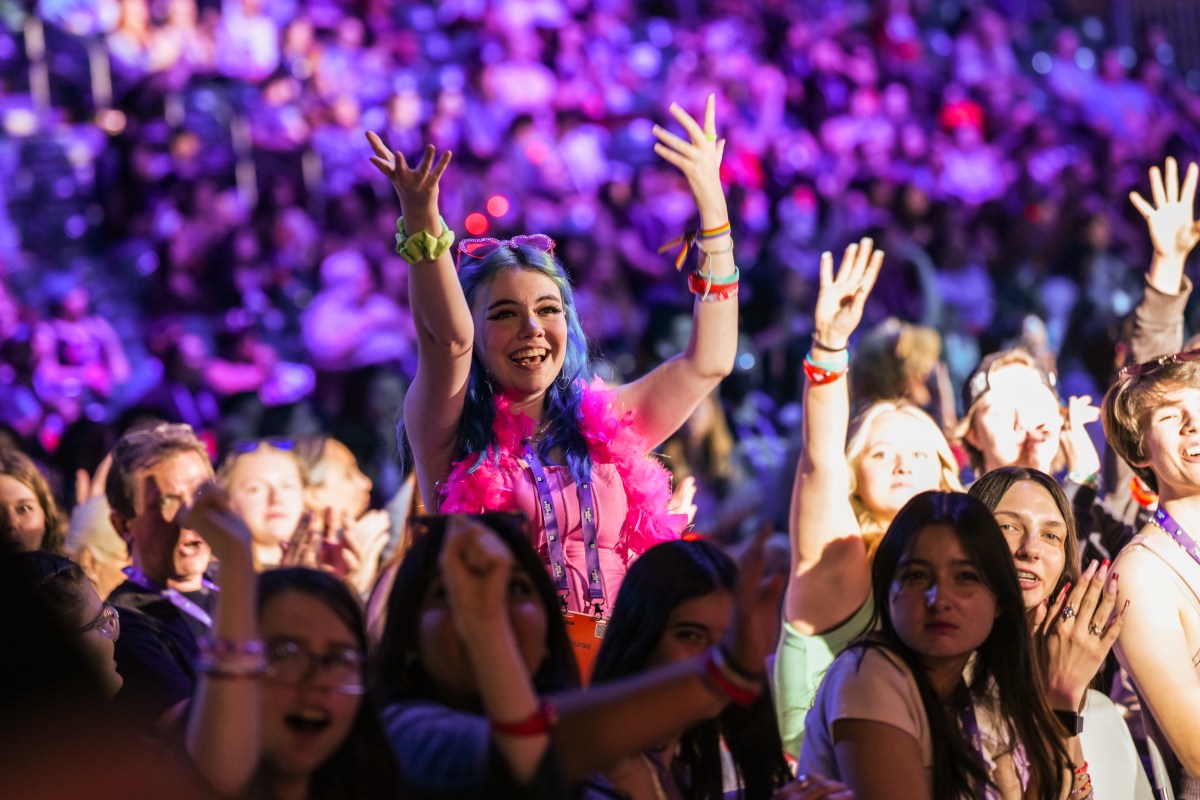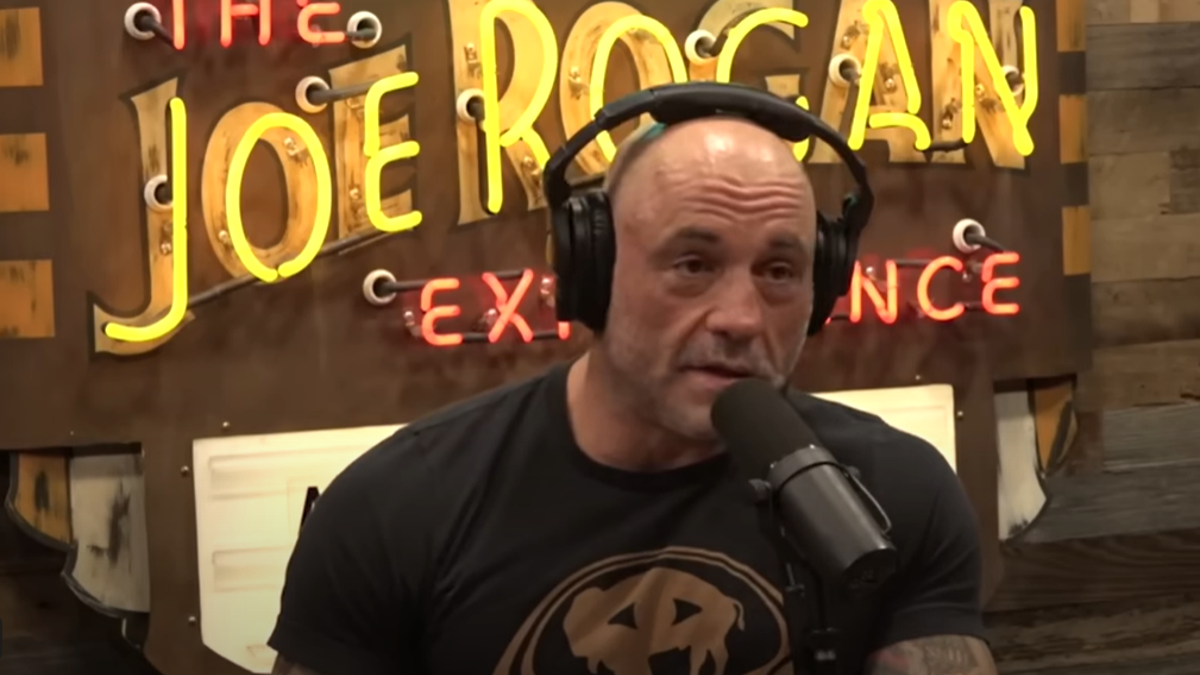Compared to the shitshow that went down last year, TwitchCon Las Vegas was largely a success. The problem? Nobody liked Las Vegas.
This year’s TwitchCon appeared to mitigate last year’s crowding issues and concluded without any foam pit tragedies. The fraught relationship between Twitch and its streamers is on the mend after the company opened the event by announcing that it now allows simulcasting, so that streamers can stream on multiple other platforms at the same time. Attendees gushed about the overall positive energy at the convention, posting that it “actually feels like Twitch is back.” Livestreaming competitor Kick “haunted” TwitchCon with its nearby gaming lounge, but that didn’t put a damper on TwitchCon’s good vibes. There was even a gay engagement on stage!
The generally positive consensus comes after a tense year for Twitch, punctuated by rounds of layoffs and unpopular policy changes. Dan Clancy, who had served as the company’s president since 2019, took the reins from Twitch co-founder Emmett Shear earlier this year, ending Shear’s 16-year tenure as CEO. Clancy’s leadership was initially met with trepidation; after meeting him at TwitchCon last year, streamer Jakenbake described him as “out of touch with what streamers need and want.”
Clancy appears to have made it up to the streamer community in time for this year’s event. Lowco, the streamer who proposed to her girlfriend on stage during TwitchCon’s opening ceremony, praised Twitch for improving its communication and transparency, and told TechCrunch that Clancy engaged with streamers all weekend. To run Twitch, she said, “you really need to understand the culture.”
“There’s a reigniting feeling that we as creators are being heard and can be a part of Twitch’s decision making process,” Lowco told TechCrunch. “Dan Clancy’s presence this year made a tremendous impact on the atmosphere. He was everywhere, taking pictures, listening to creators, IRL streaming, and truly being part of the TwitchCon experience.”
But it wouldn’t be TwitchCon without some grumbling. Though attendees said Twitch itself had improved, many expressed frustration about the event’s location. The convention took place on the Las Vegas Strip, an area that’s expensive, not walkable and lacks spaces to casually hang out with other streamers.
“I think most of us agree TwitchCon Vegas felt very positive in a way that hasn’t been felt in some time,” Lowco posted on X (formerly Twitter). “But also we are positive we don’t want TwitchCon to be in Vegas again. Lol.”
It’s the first North American TwitchCon to be held outside of California since Twitch’s inaugural convention in 2015. Las Vegas may be able to physically accommodate such a large event, but many TwitchCon attendees complain that it lacks the infrastructure to foster the community engagement that Twitch revolves around. Daytime hangouts outside of the convention center were challenging; spaces that don’t revolve around drinking or gambling are scarce on the Strip, and if they do exist, they’re too far from the convention center to quickly visit.
“The convention center in Vegas was solid but the city had way too much going on,” Lowco added. “We don’t need the distractions of Vegas, there’s enough for us to do. Vegas had the community split all over the city, which is not convenient to get around.”
Rachel Delphin, chief marketing officer at Twitch, confirmed to TechCrunch that next year’s convention will not be in Las Vegas, but couldn’t disclose where it would wind up. Twitch hosts two conventions every year: one in Europe and one in North America. TwitchCon Europe has taken place in Berlin, Amsterdam and most recently, Paris. Twitch has hosted its North American events throughout California, including in San Jose, Long Beach and San Diego.
To its credit, Twitch is receptive to community feedback, and has had to dramatically scale up its conventions as the platform’s usership skyrocketed since the pandemic started in 2020. Attendees complained that last year’s event, which was the first convention that Twitch hosted in North America in nearly three years, was overcrowded and poorly laid out. The San Diego Convention Center’s tight hallways couldn’t accommodate so many people, which was worsened by fans flocking around popular streamers and blocking the flow of traffic.
Attendees also complained that the venue was inaccessible for those using mobility aids, such as wheelchairs and walkers, because of the unmanaged crowds and unprepared security. In an X thread about the event’s lack of accessibility, attendees said that when popular streamers walked by, swarming fans pushed around those using mobility aids and nearly trampled them.
Twitch managed to mitigate crowding issues during this year’s convention, a success that Delphin credits to the company learning quickly.
“It was a huge demand to come back. I think fandoms have grown in that time period, just the fervor around specific creators that was totally and wholly different than we’d seen before,” Delphin said of last year’s TwitchCon. “And the creators themselves had also absolutely exploded. It used to be that you’d come to TwitchCon, be the biggest creator, and you could walk around pretty freely. Now it’s huge, it’s a whole different kind of apparatus to manage.”
Attendee feedback is clear: Next year’s convention, wherever it is, needs to have more accessible third places.
The third place is a sociological term that refers to a physical space that isn’t work or home, where people can socialize without the obligations of productivity. If you can hang out there, it’s a third place. During the pandemic, virtual communities served as ad hoc third places in lieu of coffee shops, bookstores and gyms. Twitch, which saw exponential growth during the pandemic, was one of them. Last year’s San Diego-based TwitchCon, for all of its faults, took place in a walkable city abundant with nearby places to hang out, allowing attendees to bond, network and interact outside of the convention center. There’s no shortage of third places in Las Vegas, but for many TwitchCon attendees, nightclubs and casinos either aren’t accessible alternatives to San Diego’s more casual venues.
Moni, a streamer working in games tech who goes by Monistreams, expressed her frustrations in a recent post on Twitch’s feedback forum UserVoice.
“They do a really good job of preparing content, it truly feels like a celebration of the community and streamers,” Moni said over a Discord call. “That’s their selling point. It is a celebration of streamers and their communities, However, in Las Vegas, it felt like people were not spending time with their favorite streamers or their communities because they were all stuck in an Uber or walking an hour on the Strip, or basically doing anything else but being at the con.”
For a city designed around tourism, the Las Vegas Strip is a pain to navigate — a fact that CES attendees are well acquainted with. Whatever traffic and accessibility issues last year’s TwitchCon attendees faced in San Diego’s Gaslamp Quarter paled in comparison to the complaints about the Las Vegas Strip.
Walking in the sprawl of casinos is nearly impossible, especially in Nevada’s oppressive October heat. The Las Vegas Convention Center, where TwitchCon’s programming and exposition hall were based, is located at the end of the Strip and the majority of nearby dining options are either fast food chains or extravagant restaurants. Taking rideshares could be prohibitively expensive (I, for example, spent a heinous $37 on one 10-minute ride between TwitchCon events), and the sheer demand for cars meant that waiting for an Uber could take anywhere between five and 30 minutes. Other events nearby, like the emo revival music festival When We Were Young and the upcoming Formula One Grand Prix, further complicated travel around the convention center.
It was even worse for disabled attendees. Streamer Steve Saylor, a blind gamer and disability advocate, posted that he struggled to get around Las Vegas, even with rideshares, and that those with motor disabilities had even more difficulties because of the lack of adequate accommodations in the city’s infrastructure.
These complaints about the Las Vegas Strip aren’t new, and are usually accepted in the trade-off for a weekend of partying or networking at a business conference. Twitch’s usership, however, skews younger — Twitch reports that in 2022, over 70% of its viewers were between 18 and 34 — and they may not have the disposable income to drop hundreds every day on meals and rides. Attendees who do drink complained that Las Vegas is significantly more expensive than San Diego.
The city’s emphasis on drinking and gambling is incompatible with much of Twitch’s usership. Las Vegas venues are overwhelmingly 21+, which excludes a significant portion of TwitchCon’s streamers and viewers. Even if they are of legal drinking age, today’s young adults tend to drink less than previous generations did.
Las Vegas’ frenetic pacing is enthralling for many, but some Twitch users complained that the city’s energy didn’t fit the Twitch demographic. Moni’s UserVoice post noted that the sensory overload that makes Las Vegas feel like Las Vegas isn’t as alluring for introverted gamers.
“I want to be mindful of the target audience Twitch serves — I would probably assume many of us felt the same about the overstimulation,” Twitch streamer herokerrey commented. “While I understand in person events are a hype/stimulating experience, pairing it with one of the most active cities in the world may not have been the best pick.”
Other users commented that they missed the spontaneous get-togethers that made previous conventions so enjoyable, and that the offsite events like creator mixers were scattered across the city. One commenter complained that transportation between events took as long as actually attending the events.
DinomiteTwins, Twitch streamers who are identical twins and share a channel, commented that the city’s size “put a damper” on how easily they could meet fellow creators.
“We were in an approved hotel [provided by Twitch] and I met more vacationers, metal workers, and brides than Twitch streamers in my hotel,” one of the DinomiteTwins commented. “A smaller walkable city promotes organic interaction as we are not all taking cabs … It felt like the priority was just being in a fun place instead of facilitating vendor, creator and community meetups and deepening those ties.”
Third places provide more than just a break from the glare of fluorescent convention center lighting — they’re vital for building community, a sentiment that Twitch insists is unique to its platform as other livestreaming competitors gain users. Compared to its competitors, Twitch’s robust moderation and slew of collaboration features does facilitate a closer knit sense of community among its streamers and viewers. There was plenty of opportunity to mingle within the walls of the convention center, which even had a designated room to decompress and make friendship bracelets, but organic interactions seemed constrained to Twitch-sponsored events. The diverse programming and various meetups could only do so much in an area with so few casual social spaces.
Lowco, Moni and multiple other Twitch users commenting on Moni’s UserVoice post all questioned why TwitchCon couldn’t take place in San Diego again. Some have floated hosting both a West Coast and East Coast TwitchCon, if capacity is a concern. VidCon, which has traditionally been held in Anaheim, California, recently launched a second convention earlier this year in Baltimore, Maryland.
“Ultimately, TwitchCon is a community celebration,” Lowco said. “We are there to meet up with our viewers and fellow streamers. Let’s pick places that make it easy for us to gather.”


























































